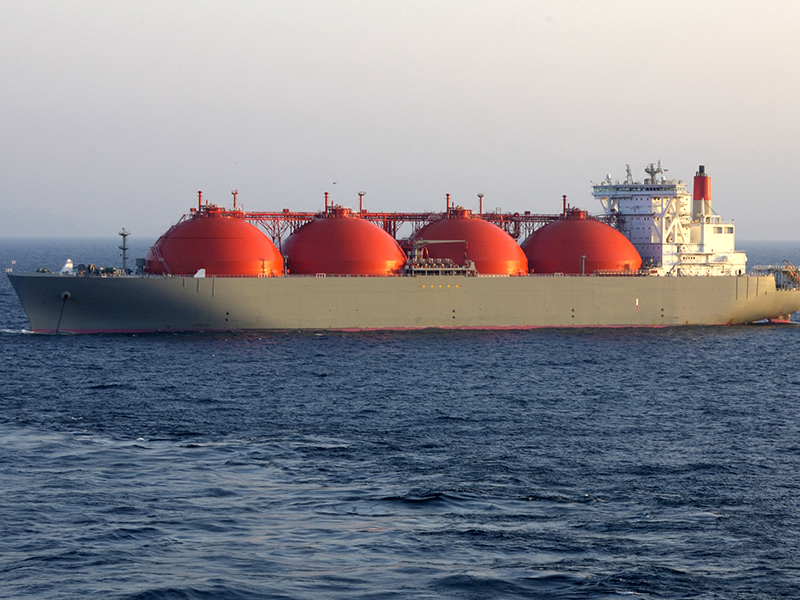What is LNG?
Did you know?
Natural gas is transported on specially designed ships as liquefied natural gas (LNG). LNG is natural gas that is cooled to -260° Fahrenheit, the temperature at which natural gas becomes a liquid. The volume of the liquid is 600 times smaller than the gaseous form.
Source: Stock photo (copyrighted)
Liquefied natural gas (LNG) is natural gas that has been cooled to a liquid state, at about -260°Fahrenheit, for shipping and storage. The volume of natural gas in its liquid state is about 600 times smaller than its volume in its gaseous state. This process, which was developed in the 19th century, makes it possible to transport natural gas to places pipelines do not reach and to use natural gas as a transportation fuel.
LNG increases markets for natural gas
Where natural gas pipelines are not feasible or do not exist, liquefying natural gas is a way to move natural gas from producing regions to markets, such as to and from the United States and countries in Asia or Europe. LNG is shipped in special ocean-going ships (tankers) between export terminals, where natural gas is liquefied, and import terminals, where LNG is returned to its gaseous state (regasified). At an import terminal, it can be injected into pipelines for transmission to distribution companies, industrial consumers, and power plants.
Most LNG is transported by large ships/tankers called LNG carriers that are equipped with onboard, super-cooled cryogenic tanks. LNG is also transported in relatively small volumes on ships using International Organization for Standardization (ISO)-compliant containers and on trucks.
LNG can be used as a fuel for ships, trucks, and buses with specially designed fuel tanks. Some power plants store LNG and use it to generate electricity when electricity demand is high and their natural gas demand exceeds pipeline delivery capacity.
The United States imports and exports LNG
In recent years, the United States has become a net exporter of LNG, largely because of increasing U.S. natural gas production, declining imports of LNG, and expansion of LNG export terminal capacity.
The United States imported very small amounts of LNG until 1995, and then LNG imports generally increased each year until peaking in 2007 at about 771 billion cubic feet (Bcf). Increases in U.S. natural gas production and expansion of natural gas pipelines have reduced the need to import natural gas. LNG imports declined in most years since 2007.
In 2017, the United States imported about 78 Bcf of LNG—the lowest amount since 1997—from three countries:
- Trinidad and Tobago–70 Bcf
- Nigeria–6 Bcf
- Canada–2 Bcf
Most of U.S. LNG imports are into the Everett regasification terminal near Boston, Massachusetts. Massachusetts, Connecticut, Maine, New Hampshire, Vermont, and Rhode Island may have significant pipeline constraints when heating demand increases substantially during periods of very cold weather. LNG imports help to meet natural gas demand in New England because the region currently has limited pipeline interconnections with the Northeast and U.S. producing regions.
In 2017, the U.S. exported about 708 Bcf of LNG to 28 countries, more than in any previous year. The top five destination countries and their shares of total U.S. LNG exports in 2017 were
- Mexico–20%
- South Korea–18%
- China–15%
- Japan–8%
- Jordan–5%
In 2017, nearly all U.S. LNG exports were transported on LNG carriers. Less than 1 Bcf was exported to Barbados and the Bahamas on small tankers equipped with ISO containers. Less than 1 Bcf of LNG was exported by truck to Canada and Mexico.
Sometimes the U.S. re-exports natural gas that it originally imported when natural gas prices are favorable to do so. About 0.4 Bcf of LNG was re-exported to Mexico in 2017.
U.S. LNG exports are expected to increase in coming years as new U.S. LNG export capacity comes online. Our data file provides detailed information on existing and under-construction large-scale U.S. liquefaction facilities.




